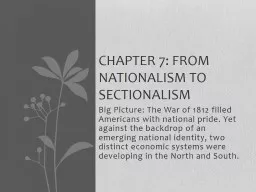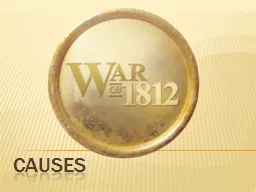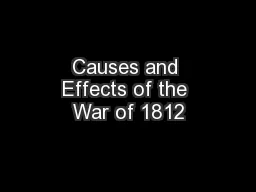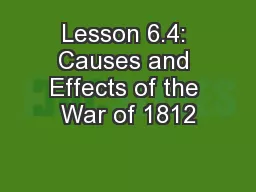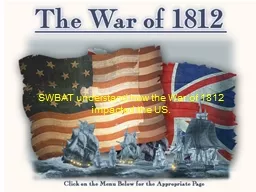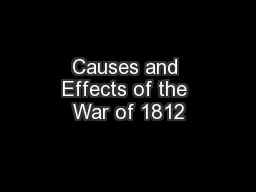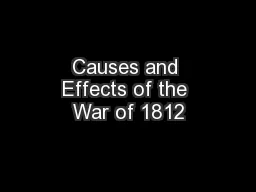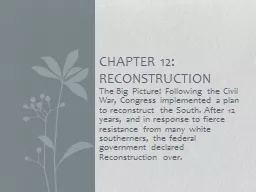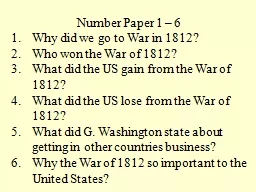PPT-Big Picture: The War of 1812 filled Americans with national pride. Yet against the backdrop
Author : ellena-manuel | Published Date : 2019-12-04
Big Picture The War of 1812 filled Americans with national pride Yet against the backdrop of an emerging national identity two distinct economic systems were developing
Presentation Embed Code
Download Presentation
Download Presentation The PPT/PDF document "Big Picture: The War of 1812 filled Amer..." is the property of its rightful owner. Permission is granted to download and print the materials on this website for personal, non-commercial use only, and to display it on your personal computer provided you do not modify the materials and that you retain all copyright notices contained in the materials. By downloading content from our website, you accept the terms of this agreement.
Big Picture: The War of 1812 filled Americans with national pride. Yet against the backdrop: Transcript
Download Rules Of Document
"Big Picture: The War of 1812 filled Americans with national pride. Yet against the backdrop"The content belongs to its owner. You may download and print it for personal use, without modification, and keep all copyright notices. By downloading, you agree to these terms.
Related Documents

